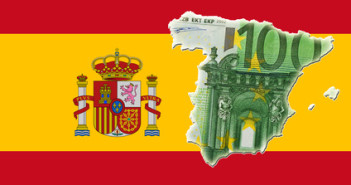Since mid 2012, Spain had no problem raising money in markets and yields fell all along the curve. 10 year bond yields fell below US 10 year bond yields and stayed there for a long time.
Spain tried to raise a maximum of 3.5 billion euros in the markets and managed to raise only 3.2 billion. In addition, the yield came out at 2.20% after 2.08% last time.  This is certainly a sign of stress and a liquidity crunch in markets. Spanish 10 year bond yields are 18 basis points higher, the biggest jump since June 2013.
US bond yields and Spanish bond yields are now at par: 2.15% each. Update: they are now far apart: 2.34% in Spain and 2.01% in the US. The Spanish yields are still low, but the wild jumps are scary.
This may be a one off and the situation in the fourth largest euro-zone economy has certainly improved. However, when joined by the jitters in Greece, it already seems quite worrying.
Greek 10 year bond yields continued their surge: after hitting 7% yesterday, the level is well above 8% today. The country is at loggerheads with the troika about exiting the bailout program, and the rise of the opposition in the polls is also causing worries. With a primary surplus, Greece feels more confident.
All this comes as global markets sell off, alongside commodities. The risk off sentiment might be hitting Europe’s weaker spots, raising memories of 2012 alongside EUR/USD levels from 2012.
While the pair is still on high ground, these kind of issues could send it down.
Or – lower bond yields allow the ECB to move? When discussing ECB QE, one of the questions (apart from political obstacles) was: what will they buy? Perhaps now the markets present some opportunities, as peripheral yields are on the rise.
More: EUR/USD, Cable, SP500: Levels To Targets In Risk-Off – JP Morgan



